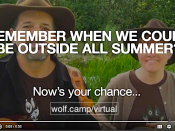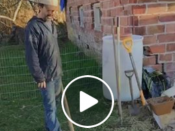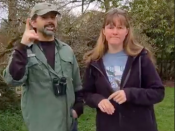… Continued from Teaching Nature Part II – Learning Styles & Age Considerations
 Let’s Prep This Thing
Let’s Prep This Thing
- Review what was promised: course description, website, policy manual, emails, private contract proposal.
- Group similar skills together on a list.
- Determine the best flow of skills. For instance, to teach animal tracking, you gotta start with general awareness.
- Draft a guess at your timeline to facilitate efficiency. Be as realistic as possible, and decide which skills are absolutely necessary so you can cut or deprioritize what’s “too much” if time doesn’t allow for more. Remember the FAF Factor (Farting Around Forever) during transitions from one activity to another. Pee breaks! The more authority you have with the kids right away, a fundamental skill as described in my previous article in this series, the less FAFing there will be during transitions, and you’ll get more done, i.e. the students will learn more and that’s often the mark of an excellent teacher.
- Refamiliarize yourself with the material, and for each activity you plan to introduce, make a list of • all necessary materials, and • supplemental safety measures for risk mitigation.
- Take a look to see if you have balanced your lesson/program between the head, heart, and hands appropriately for the age group and kind of students you have. Finally, do you allow for “in-breathing” and “out-breathing” as they say in Waldorf Education, or is everything you do require constant concentration, or too much excitement to control behavior? Revise your timeline accordingly.
Let’s Teach This Thing
- Get everyone into a circle. This facilitates much better learning in most cases, but especially outdoors where you don’t have any other way to focus attention. If even one student hangs back, bring them in, stepping closer if necessary to help them form a perfect circle or oval. My one-liner to my staff is that it’s “all about the circle” if you want to be an effective teacher.
- Start with introducing yourself to each student, how you are today, shaking each hand if a small group, or surveying a large group by asking how many people feel like a “10” today, 9, 8, 7 and so-on to “1” being worst so you can keep an eye on those who might need more attention.
- Give an overview of the lesson/program – not so much that you bore everyone, but enough to satisfy the Asperger Spectrum students who just have to know what to expect. This is a great moment to make an example of a misbehaving student, to transition into rules.
- Set the rules, and by all means, use a list. If you forget even one rule, you will regret it. No matter how long you’ve been teaching, use a list. You can often skip most of the list since you will already have a sense of whether the group is an easy one by this time, often only 5 minutes into it. For an example of general rules, see our Agreements for Participation in day and overnight camps. We read each agreement, requiring participants to say “aye, aye” after each one.
- Tell a story. For adults, it needs to impress with copious information. For kids, you can just read a story, but make it a magical one. The story should introduce the skills.
- Reiterate the skills with specific information, instruction and/or demonstration.
- Have the students experience the subject through an activity that teaches itself to them.
- Review the lesson and give your students tools to practice on their own – homework if you want to call it that.
- Test your students in a way that puts it all together, and helps you assess how much they understood or embodied the lesson, the learning, maybe engaging them in a “why it matters” experience: possibly a participatory monologue or song.
- Have them evaluate your lesson in a way that helps them learn it yet again.
 Positive Parental Relationships
Positive Parental Relationships
The other thing you are going to have to know as a first-time teacher is how to deal with parents and other influential family members of your students. Some of the best reminders are well-summarized by Expert Online Training:
- A great drop-off at the beginning of the day is important because it sets the tone for a positive start to the day for children and parents, starting the day in a professional way that reassures parents and children
- Proper drop off at the beginning of the day includes welcoming body language, a positive tone of voice, interacting with parents, and being on time.
- The main idea of an organized pick-up at day camp is to offer specific praise, monitor safety, and openly communicating important information about their child.
- Staff debrief of the day will always include an immediate recounting of essential events that are shared directly with parents at pick-up.
- Parents may be particularly difficult to deal with because they might feel overwhelmed, so be sure to personally guide them through orientation, helping them complete key tasks. The best recipe for dealing with difficult parents does not exist … you have to learn by trying different things.
- Anxious parents need reassurance, firm boundaries, and a calm tone. An example of being interested and understanding would be asking a parent how their drive was and what their questions are. Being a soothing presence for overwhelmed and anxious parents entails staying calm, helping out, providing reassurance, and setting limits.
- Anxious parents are easy to spot because they express worry and have a hard time saying goodbye. If a parent promises a child “I’ll pick you up if you feel homesick” then it’s usually best to ask if there is a particular reason why they are feeling anxious, reassure the parent, discourage the pick-up deal and encourage a full-session stay.
- To work effectively with an unhappy parent, consider the “customer service” angle by listening and problem-solving. If staff members argue with a difficult parent, it can “fan the flames” of the parent’s anger. A skillful approach to working with difficult parents focuses on customer service, listening, and preserving policies.
- Remember, defiant parents have broken the rules and may want your cooperation. To work effectively with defiant parents, be strong, kind, and interested, especially regarding rules.
- In comparison, bossy parents have a picture in their mind about how the summer program should be different, and in that case, you can respectfully consider realistic ways to collaborate and compromise.
- Finally, always remember that having a parent conversation in front of their child depends on whether the intensity and/or topic is appropriate. Usually it’s not wise.
Ready To Lead?
I think the best way to explain what’s needed to gain competence before taking responsibility to lead nature programs, is to read the Conservation College Summer Training Requirements policy for staff:
1.0 Staff such as lead instructors who do not require direct supervision to care for students attending programs, in addition to past trainings equivalent to graduation requirements for the Earth Skills Teaching Apprenticeship, must complete at least one of the following trainings earlier in the same calendar year, and all of the following trainings within the past 3 years:
- Backcountry Leadership – Wilderness Conservation, Navigation & Risk Management or equivalent 60 class-hour outdoor risk management training at another institution.
- Teaching Nature: Training for Environmental Educators & Nature Guides or equivalent 60 class-hour teachers training at another institution.
- Wilderness Skills Sampler including Daily Classes or equivalent advanced remedial/ continuing educational training on an overview of the earth skills subjects we teach.
- 24 class-hour emergency rescue training such as Wilderness First Aid or Lifeguard Training that includes CPR in addition to wilderness medicine or lifeguarding skills.
1.1 Staff such as apprentices and underage assistant instructors who do require direct supervision to care for students, must have attended at least two of the above courses (or equivalent) within the current calendar year, and must be part of an apprenticeship, internship, or outdoor mentoring training program.
2.0 Within the current calendar year, all staff must have read the entire outline of the camp’s policy manual, as well as read all policies and procedures relevant to the courses in which they are participating.
2.1 All staff will have immediate access to the camp’s policy manual and procedures at all times whenever responsible for students.
Continue to Teaching Nature Part IV – Outdoor Education Tips & Tricks of the Trade….









